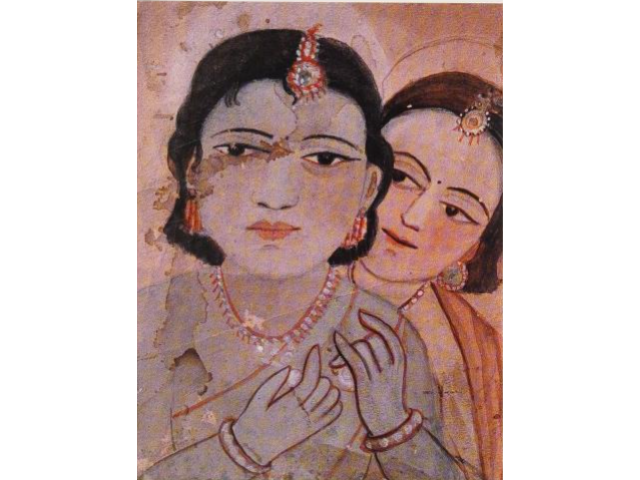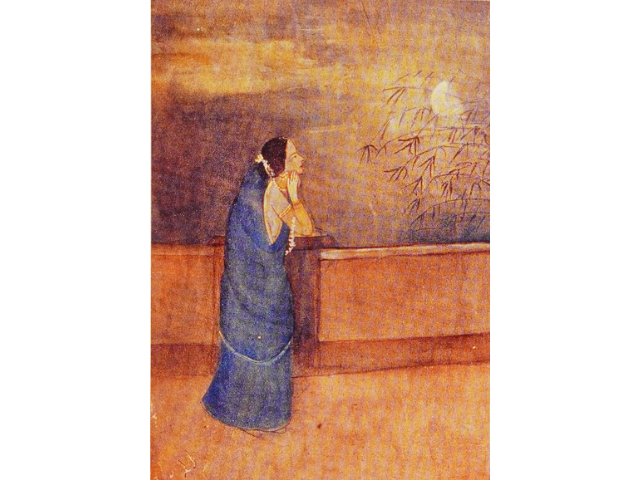The first Indian woman painter to gain public recognition
Sunayani Devi (সুনয়নী দেবী) was born in Calcutta, to the Tagore family of ingenious writers and painters.Often considered among the first women painters in India, she grew up amidst the cultural ferment that was the Bengal Renaissance. She was brought up in the traditional and secluded women's quarters. She recalls her fascination with the devotional pictures in her aunt's room as a child. At that time, " it was unknown and unheard of for women to do anything."
 Sunayani Devi, Two Women, c.1920s, Watercolour on paper
Sunayani Devi, Two Women, c.1920s, Watercolour on paper
Image Source: The Triumph of Modernism by Partha Mitter
The yearning artist would quietly observe her brothers Gaganendranath and Abanindranath Tagore at work before she took up painting at the age of 30. Her creative process had to be tailored around the role of a matriarch in a large well-to-do household.
.jpeg)
Sunayani Devi, Lady with Parrot, Watercolour
Sunayani Devi's grandson recalls her work method:
She would sit on a takaposh (divan), propped up with bolsters, painting and occasionally dipping her painting in the water bowl that had been used for washing vegetables, all the while supervising her daughters-in-law who made preparations for the cooking. [1]
Sunayani Devi’s paintings were influenced by Indian mythology and her life in a Bengali household. The elongated, heavy-lidded eyes of her figures remained popular motifs in her paintings.
 Sunayani Devi, c. 1920s, Watercolour on paper
Sunayani Devi, c. 1920s, Watercolour on paper
Image Source: The Triumph of Modernism by Partha Mitter
Sunayani Devi introduced the female gaze in the Indian art world. She depicted the solitude and pensive moods of women with tenderness and a certain charm, giving us a glimpse of her innermost private life, and influencing masterpieces like Three Girls by Amrita Sher-Gil.
In 1935, an exhibition showcasing Sunayani Devi's artwork was held by her admirers. This was to be the last of her public exhibits. In the 1940s, Sunayani Devi departed the world of art after her family suffered a series of misfortunes.
Today, we fondly recall Sunayani Devi's short-lived but deeply personal practice that made its mark in the history of artistic discourse.
References
[1] Partha Mitter. The Triumph of Modernism. 2017
[2]Shilpi Das. Remembering Sunayani Devi: A forgotten artist from history. The Heritage Lab. 2019